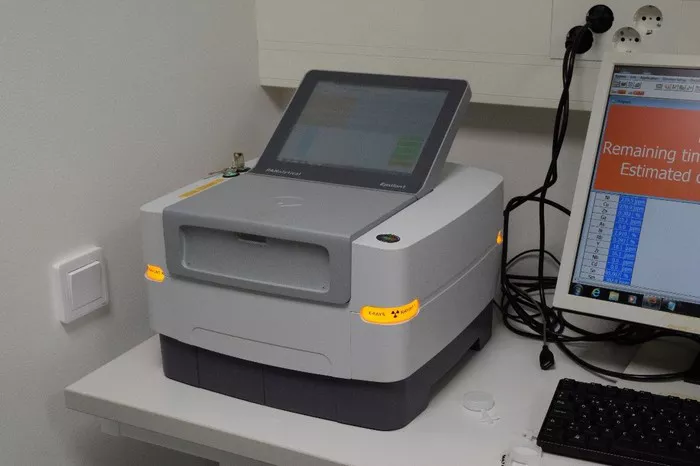A Raman spectrometer is a scientific instrument used to analyze the molecular composition of materials through Raman spectroscopy. This technique relies on the scattering of monochromatic light, typically from a laser, as it interacts with molecular vibrations, phonons, or other low-frequency modes in a sample. The Raman spectrometer enables researchers and engineers to identify molecular structures, detect chemical compositions, and study material properties in various fields such as chemistry, physics, biology, and engineering.
This article explores the fundamental working principles of a Raman spectrometer, its components, operational mechanisms, and applications in different industries.
Working Principle of a Raman Spectrometer
Raman spectroscopy is based on the Raman effect, discovered by Indian physicist C.V. Raman in 1928. When light interacts with a molecule, most of it is elastically scattered (Rayleigh scattering), meaning it retains its original energy and wavelength. However, a small fraction of the scattered light undergoes inelastic scattering, resulting in energy shifts corresponding to molecular vibrations. These shifts provide a unique spectral fingerprint of the material being analyzed.
Key Mechanism:
Excitation: A monochromatic light source, typically a laser, illuminates the sample.
Scattering: The incident photons interact with the molecular bonds in the sample. A majority of photons undergo Rayleigh scattering (no energy shift), while a small fraction undergoes Raman scattering (energy shift due to molecular vibrations).
Spectral Detection: A spectrometer collects and analyzes the scattered light to determine the Raman shifts.
Data Interpretation: The Raman shift values are compared to known spectral databases to identify the chemical composition of the sample.
Components of a Raman Spectrometer
A typical Raman spectrometer consists of the following components:
Laser Source
The laser serves as the monochromatic light source. Commonly used laser wavelengths include:
- 532 nm (green laser)
- 633 nm (red laser)
- 785 nm (near-infrared laser)
- 1064 nm (infrared laser)
Shorter wavelengths (e.g., 532 nm) provide stronger Raman signals but may cause fluorescence interference, whereas longer wavelengths (e.g., 785 nm and 1064 nm) reduce fluorescence effects but have weaker Raman signals.
Optical Components
Filters: These help remove unwanted Rayleigh scattered light, allowing only Raman-shifted light to pass.
Lenses and Mirrors: Used for focusing the laser onto the sample and directing the scattered light to the spectrometer.
Sample Holder
The sample holder varies depending on the type of sample analyzed. Common types include:
- Solid-phase holders for powders, crystals, or bulk solids.
- Liquid cells for aqueous or organic solutions.
- Gas-phase chambers for analyzing gaseous molecules.
Spectrometer
The spectrometer disperses the Raman-scattered light into its constituent wavelengths and records the intensity at each wavelength. A diffraction grating or prism is typically used for this purpose.
Detector
CCD (Charge-Coupled Device): The most commonly used detector for visible and near-infrared Raman spectroscopy due to its high sensitivity.
InGaAs (Indium Gallium Arsenide) Detector: Used for near-infrared applications.
Computer and Software
Computational software processes the collected spectra and compares them with existing Raman databases for material identification and analysis.
Types of Raman Spectrometers
There are various types of Raman spectrometers, each designed for specific applications:
Dispersive Raman Spectrometer
This type uses a diffraction grating to separate Raman-shifted wavelengths and is widely used in research and industry.
Fourier Transform Raman Spectrometer (FT-Raman)
Utilizes an interferometer instead of a grating for spectral analysis. It is mainly used with near-infrared lasers to reduce fluorescence issues.
Portable Raman Spectrometer
Compact and lightweight, this spectrometer is ideal for on-site analysis, such as in pharmaceuticals and forensic investigations.
Surface-Enhanced Raman Spectroscopy (SERS) System
Enhances Raman signals by utilizing nanostructured metal surfaces, allowing detection of very low concentrations of analytes.
Tip-Enhanced Raman Spectroscopy (TERS) System
Combines atomic force microscopy (AFM) or scanning tunneling microscopy (STM) with Raman spectroscopy for ultra-high-resolution molecular analysis.
Applications of Raman Spectroscopy
Raman spectrometry finds applications across various scientific and industrial fields:
Material Science
- Identification of polymers, ceramics, and composite materials.
- Characterization of carbon-based materials like graphene and carbon nanotubes.
Chemistry and Pharmaceuticals
- Analysis of drug formulations and quality control.
- Detection of counterfeit medicines.
- Study of reaction mechanisms and molecular structures.
Biology and Medicine
- Non-invasive medical diagnostics (e.g., cancer detection).
- Protein and DNA analysis.
- Study of biological tissues and cells.
Forensics and Security
- Detection of illicit substances and explosives.
- Investigation of trace evidence in criminal cases.
Environmental Science
- Detection of pollutants and hazardous chemicals.
- Water quality analysis.
Semiconductor and Electronics Industry
- Characterization of semiconductor materials.
- Detection of microstructural defects in electronic components.
Advantages and Limitations of Raman Spectroscopy
Advantages:
Non-destructive analysis: Sample remains unaltered after testing.
No sample preparation required: Unlike some other spectroscopic methods, Raman spectroscopy does not require extensive sample preparation.
Can analyze solids, liquids, and gases: Versatile for different types of materials.
High specificity: Provides unique molecular fingerprints for identification.
Can be used in aqueous environments: Unlike infrared spectroscopy, Raman spectroscopy is not significantly affected by water.
Limitations:
Weak signal intensity: The Raman effect is weak, requiring sensitive detectors.
Fluorescence interference: Some samples may exhibit fluorescence that masks Raman signals.
Expensive equipment: High-quality Raman spectrometers can be costly.
Conclusion
A Raman spectrometer is a powerful analytical tool used to determine the molecular composition of materials by measuring inelastically scattered light. With its applications spanning material science, pharmaceuticals, biology, forensics, and environmental science, Raman spectroscopy continues to be a crucial technology in both research and industry. Advances in Raman instrumentation, such as portable and enhanced Raman techniques, are further expanding its capabilities and accessibility, making it an indispensable tool for modern scientific exploration and industrial applications.

